Filling the foundation is a very important process, from the quality of the execution of which is directly ...
|
|
Due to its suppleness in processing, unique beautiful pattern and color ... |
Protection of window openings with the help of gratings has long become a necessity. Barring such ... |
Do -it -yourself private house water supply
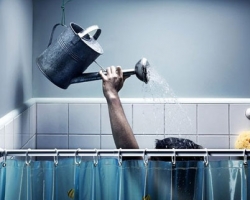
Even in the most provincial village houses, not to mention modern suburban cottages, you can significantly increase the level of comfort by simply installing the water supply in a private house. We will not assure that this is such a simple matter, especially if the house has already been built for a long time, and not just at the planning stage, but still many work on the installation of the water supply can be done independently without resorting to the help of specialists. Within the framework of this article, we will try to tell how to carry out a water supply in a private house, while we will only touch the work inside the house without taking into account the arrangement of the water supply source.
- Water supply circuit in a private house
- Installation of the water supply in a private house
- Connection of the pumping station to the internal water supply
- What is a hydraulic accumulator and why it is needed
- Supporting and water treatment
- Installation of collectors and boiler
- Water supply in a private house: video review
Water supply circuit in a private house
Do not neglect such an important point as drawing up a water supply circuit. Do not come up with excuses for yourself: yes, I only have to get into the kitchen in the bathroom. Immediately, as soon as you decide to make a water supply in a private house, draw a diagram of its house laying, taking into account all the elements: water consumers, collectors, boiler, filters and pump. Designate the location of all elements and the path of laying pipes around the house. It is advisable to apply distances to the diagram. This will greatly facilitate the task of calculating the number of pipes for the water supply.
Pipe laying scheme can be performed in two ways:
- Consumer consumer connection.
- Collective connection.
Consistent connection Suitable only for a small summer house with a small number of water consumers, where 1 2 people live. For full -fledged country houses and cottages with permanent residence, such a system is not suitable. It consists is as follows: water goes through the main pipeline throughout the house, a tee with a tap in its direction is placed near each water consumer. It turns out that if you use several consumers at once at the same time, at the most remote of them will be very low pressure that is unable to satisfy needs.
Collective connection It consists in withdrawing individual pipes from the common collector to each consumer separately. This provides almost the same pressure at each point of the house. Of course, some pressure losses will still be associated with the remoteness from the pumping station, but these losses are much less than with a sequential connection.
The choice of a collector wiring system significantly increases the cost of the water supply in a private house. Basically, due to more pipes. But it's worth it. Next, we will consider the collector system.
Any water supply scheme of private house consists of such elements:
- Source of water intake (well, well).
- Pumping station. From a water source, a pipe is laid in the ground and is brought to the pump. Before connecting it to the pump, there should be a check valve so that the water does not return back.
- The hydraulic accumulator in which water is pumped.
- After the accumulator on the outlet pipe, it makes sense to put a tee with a locking tap. One pipe will go for home needs, and the other for technical (garden, garden, car washing, etc.).
- A pipe with water for home needs is connected to a water treatment system and water treatment, since water from an underground source may contain harmful impurities.
- After filtering systems, a tee is mounted with a division into cold water and the future hot.
- A pipe with cold water is connected to a collector for cold water. Here, locking cranes are installed on each line that will go to its consumer.
- The pipe for hot water is connected to the water heater.
- The pipe with hot water from the water heater is connected to a collector with hot water, from which pipes all over the house diverge.
Other additional elements may be present in the water supply system, but the typical diagram and sequence of connection remain unchanged.
Installation of the water supply in a private house
In the works related to laying the water supply in a private house, the most dusty and heavy is the making holes in the walls or floor for the pipeline. The rest, cutting and connecting pipes, connecting to consumers, connecting to the collector, installing the pumping station and connecting filtering systems, although they will take a lot of time, they will not require great physical effort. So with your own hands, a private house waterproof is quite a feasible task even for a beginner. The main thing is that the desire to be unshakable, then everything is on the shoulder.
Choosing material for pipes
First of all, we should decide on which pipes we will use from.
- Copper pipes The best and most expensive. Corrosion is not amenable, ultraviolet radiation is not afraid, they are indifferent to microorganisms, they do not notice increased pressure, do not respond to changes in the ambient temperatures, they are also not afraid of harmful impurities in water, and even in addition they instantly give heat. In general, a dream and not pipes. One drawback price.
- Metal -plastic pipes They are aluminum pipes protected on both sides (from the inside and outside) with a layer of polyethylene. The smooth surface of polyethylene does not allow the deposits to accumulate and prevents the development of rust. The outer layer protects against ultraviolet and condensate. The significant disadvantages of such pipes are: the fear of high temperatures of more than 95 s (deformed), sensitive to freezing of water, pipes with fittings cannot be bent.
- Steel pipesOld good option. They are durable, durable, but at the same time they are afraid of rust. It is also important that for installation it is necessary either to cut the thread for the connection on each element of the pipe or to weld the pipes, which is a very laborious process.
- Polypropylene pipes Recently, they are increased popularly when conducting a water supply in a private house. This is due to the fact that they have excellent performance, are not amenable to oxidation, durable (up to 50 years), relatively easy to install, and the compounds do not require frequent verification, which allows you to hide pipes under plaster. Of the disadvantages, only one need for a special electric welding machine for connecting pipes to each other can be distinguished.
Important! If your choice of polypropylene pipes, note: for a hot water supply, reinforced pipes (fiberglass, aluminum or other material) are needed.
Given the number of pipes required for laying the collector system, the price largely depends on the material of these pipes for the water supply in a private house. So, choosing, focus on the price/quality ratio and do not forget about your budget.
Choosing the diameter of the pipes of internal water supply
The correct diameter is no less important than the pipe material. This is due to the fact that too small the diameter of the pipe can lead to a turbulization of the flow, which means that the water in the pipes will advance with noise, leaving a lot of lime deposits on the walls. The maximum speed of water progress in the pipeline is 2 m/s based on this, and you need to select the diameter of the pipes.
The diameter of the pipes also depends from the length of the pipeline:
- For a pipeline with a length of less than 30 m, pipes with a diameter of 25 mm are suitable.
- For a pipeline with a length of more than 30 m, it is better to use pipes with a diameter of 32 mm.
- For a short pipeline with a length of less than 10 m, you can use pipes with a diameter of 20 mm.
The correct device of the water supply in a private house largely depends on the correctly selected diameter of the collector pipe so that it ensures the full simultaneous use of several consumers at once. To determine it, it is necessary to perform simple calculations: for example, one crane with water passes 5 6 l/min through itself, we calculate how many and what consumers we can be turned on simultaneously throughout the house.
- A pipe with a diameter of 25 mm (1 inch) passes through itself 30 l/min;
- 32 mm pipe (1.25 inch) passes 50 l/min;
- a 38 mm pipe (1.5 inch) passes 75 l/min.
If the family is large, at the same time a lot of people live in the house, and there are few points of water clearance, quite often there will be situations when they will use a sink in the kitchen, a bathroom, a toilet, and a washing machine. The consumption of these devices per minute must be displayed on this and the diameter of the collector pipe will depend.
If the family is small, and there are a lot of water consumers around the house, then the calculation is made differently. It is necessary to calculate the consumption of water at the points of water clearance and reduce it by 25 40 %. This will be an approximate family consumption.
Welding of polypropylene pipes
Consider the connection of the pipes with each other using the example of polypropylene pipes.
For cold water, we use pipes with a diameter of 25 mm, wall thickness 2.8 mm.
For hot water, we use reinforced pipes with a diameter of 25 mm, wall thickness 3.2 mm.
Polypropylene pipes welding technology:
- We cut the pipes into segments of the required size using special scissors. Be sure to keep the blade strictly perpendicular.
- We note the depth of welding on the pipes in our case 16 mm.
- We clean the welding place with wet alcohol napkins from dust and dirt.
- On a special welding machine we install the nozzles of the desired diameter.
- We turn on the welding and set the temperature of 260 C. When it heats up, the bulbs are extinguished.
- Parts of the pipes that we want to cook are approaching on the nozzles for welding to a depth to the drawn mark. At the same time, we do not turn the pipes, do not make torque movements.
- As soon as the pipes were started on the nozzles and began to move already on nozzles, we count for 7 seconds. After the expiration we remove the nozzle, the second person must hold the welding machine.
- We connect the pipes among themselves, without making rotational movements, quickly and evenly. Hold on a few seconds.
The result should be a flat and beautiful perpendicular compound. If you are not satisfied with the result, cut off the section with the connection and repeat the procedure from the very beginning.
Before using just cooked pipes, it is necessary to let them cool a little.
Warning of the water supply in a private house
After the pipes are interconnected, you can start laying the pipes inside the house. We recommend starting from the consumer of water.
To begin with, we attach the pipe to the consumer using an adapter to a threaded connection, between the adapter and the crane hose we set the ball valve, which is necessary for overlapping water, if you suddenly need repairs, then lay it towards the collector. There are several simple rules that must be observed:
- It is desirable that the pipes do not pass through building structures (walls and partitions). But if this is not possible, when laying a pipe in the wall, it must be enclosed in a special glass.
- In order for the pipes to be easily repaired, it makes sense to place them at a distance of 20 25 mm from the wall.
- When installing drain cranes, make a light slope towards the crane.
- When the outer corner is located, the pipe is located at a distance of 15 mm, the inner angle of 30 40 mm.
- Pipes are fixed to the walls with special clips. Be sure to fix it in each corner connection, in the straight section we have clips at a distance of 1.5 2 m.
- To connect polypropylene pipes at an angle, including 90, special PND fittings, tees with the same and transitional diameters are used.
- The smaller the turns and corners in the highway, the less pressure is lost.
When connecting the pipe to the collector, locking fittings are necessarily installed to turn off the consumer from the system, including for the purpose of repair.
Connection of the pumping station to the internal water supply
The private house is connected to the water supply by the pumping station, which pumps water from the source: well or well.
The pumping station is best placed in the house, basement, basement or in a heated technical room. This will protect it from freezing and will make it possible to use the water supply even in severe frost.
From the source of the water intake, a pipe is suitable for the pumping station, which ends with a brass fitting with an adapter with a diameter of 32 mm.
We connect a tee with a drain tap to this fitting to be able to turn off the water supply for repairing the water supply. Then we connect the check valve so that the water does not return back. If you need to perform the turn of the pipe to direct it towards the station, then we use the corner by 90.
Further, we will connect all the necessary elements using the quick connection of the American:
- We connect a ball valve to turn off/turn on the water supply.
- Next, the mesh filter of rough cleaning.
- The finished pumping station should have a pressure relay and a damper tank. But if you have a pump in a water intake (well, well), and the rest of the equipment is in the house, then we connect the pressure relay on top of the pipe, and a dumpfer tank or a hydraulic accumulator from below.
- A sensor that protects the pump from dry move.
- Connect the thin cleaning filter to the remaining connection.
- Next is the transition to a pipe with a diameter of 25 mm.
Before further work, check the serviceability of the connection: run the pump whether the pump will go or not. If not, it means that somewhere something was incorrectly connected or the hydraulic accumulator of pumps.
What is a hydraulic accumulator and why it is needed
The accumulator is a hermetic tank, divided into two sections. In one there is water, in the other under pressure. This unit is necessary in order to provide stable pressure in the water supply system and turn on and off the pump when necessary.
For example, the accumulator is completely filled with water, the pressure in the system is 3 bar. When someone opens the crane in the house, uses water, it leaves the accumulator, the pressure drops, the relay works and starts the pump. The water is pumped again, the pressure becomes 3 bar.
The volume of the tank can be different: from 25 liters to 500 liters, it is selected depending on the needs of the family.
The installation of a water supply in a private house does not necessarily involve the presence of a hydraulic accumulator. You can use a large storage tank and install it on the highest floor of the house. Water will enter consumers under pressure created by its weight. But such a system is not enough for a washing machine to work.
Supporting and water treatment
Water from the source must be checked in the laboratory for impurities and soluble salts. Depending on the results, various filter systems and water treatment units are selected, deformants, etc.
Immediately after the accumulator, water should enter the water treatment system. These devices must be placed at a distance of 0.5 1 m from the accumulator.
Installation of collectors and boiler
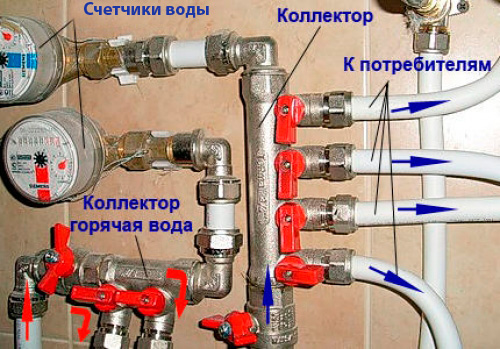
After filtering systems, water should be disconnected into two streams: one in a collector with cold water, the second will go to the water heater.
Before the collector with cold water, we must install shut -off valves and a drain valve. On each pipe in the collector too. The number of pipes depends on the number of water consumers in the house.
Laying the water supply into a private house would be incomplete without giving water.
On the pipe, which leads to the water heater, we install a safety valve, an expansion tank and a ball drain valve immediately under a boiler.
When the hot water and water heater is released, we also install a ball valve. Then we connect the pipe to the collector with hot water, from which we dilute the pipes throughout the house.
On this installation of the water supply in a private house with your own hands can be considered complete. Do not forget to first check the performance of the system and the absence of leaks in all parts of the water supply. If the results can be safely used.

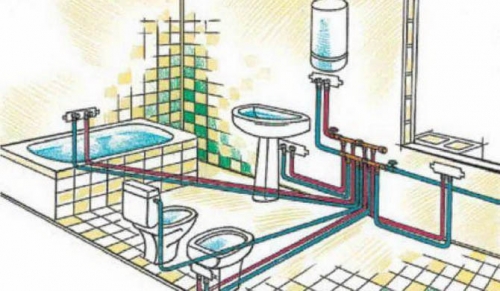
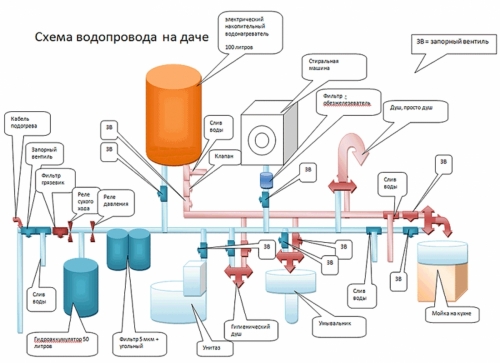
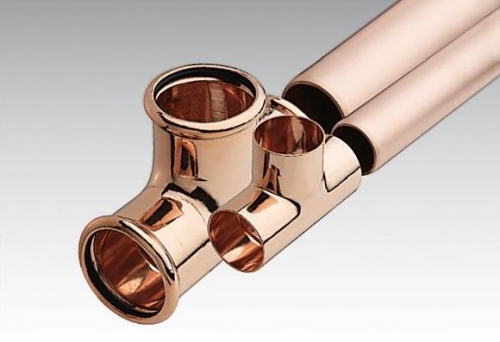
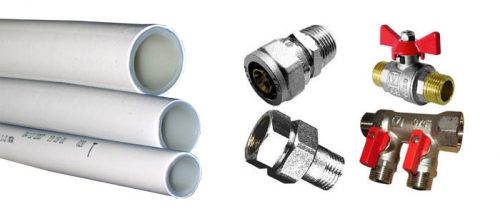
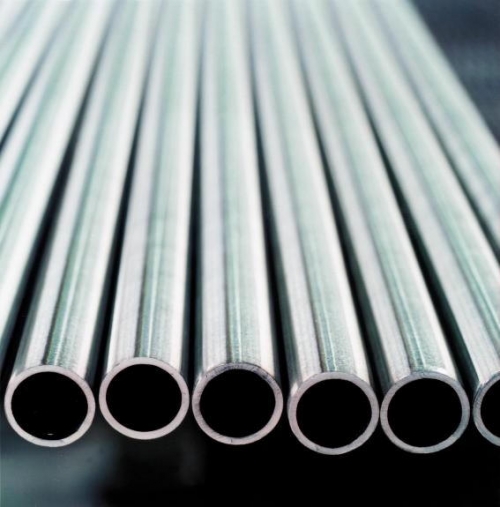

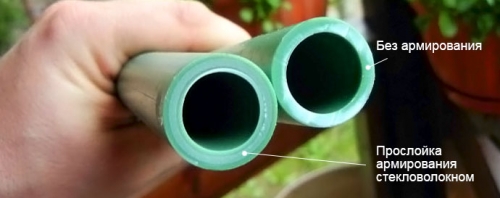
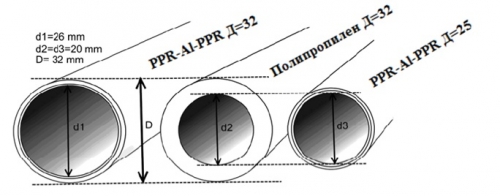
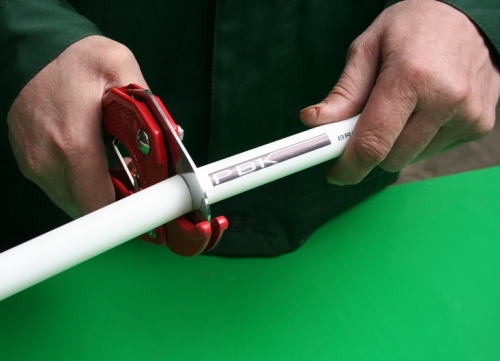
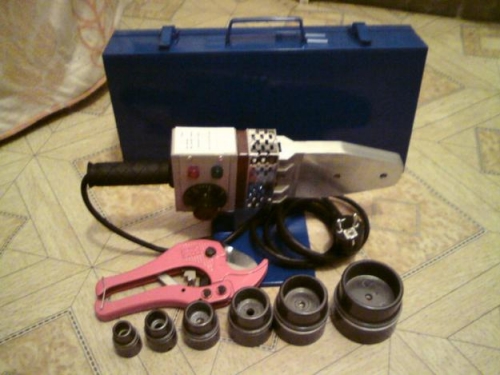
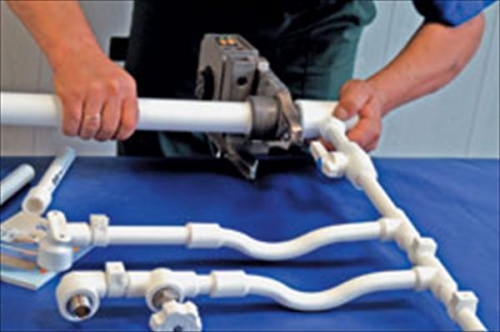
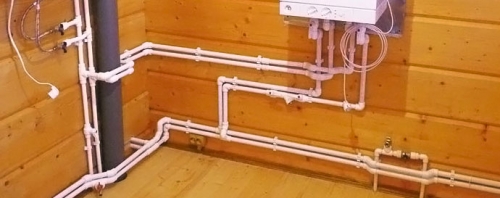
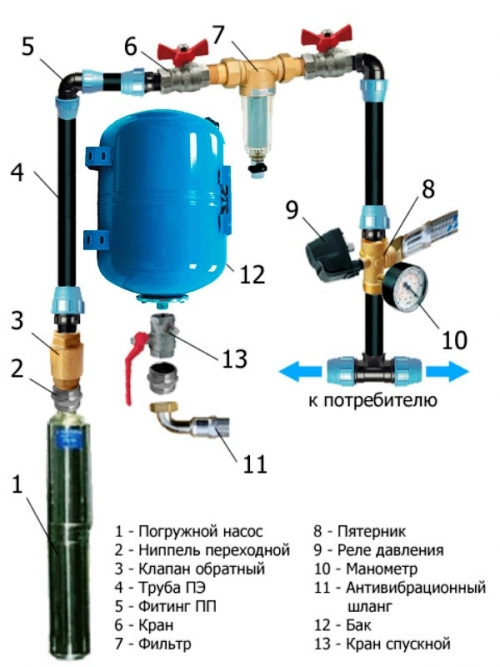
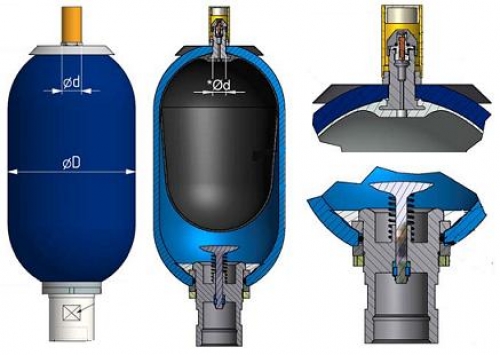
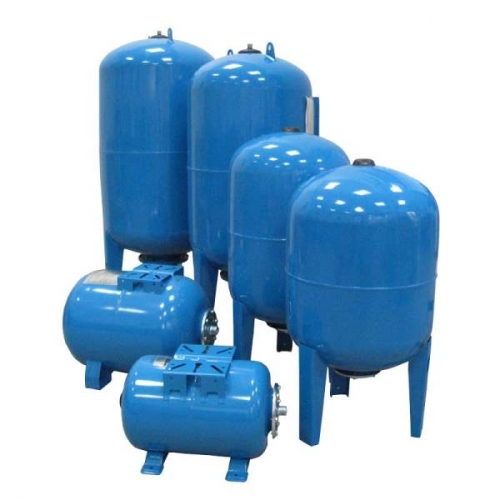
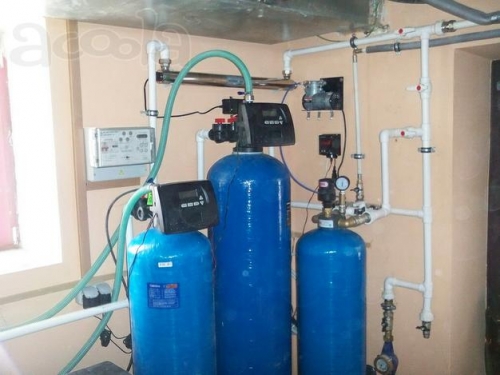
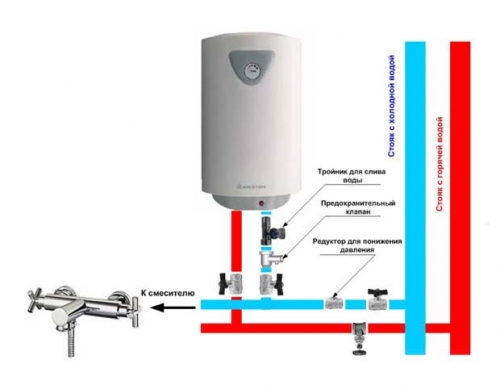
Bazaar no guys super
Bazaar no guys super
THANKS!!!
THANKS!!!
If the water is in the well
If the water in the well ends, the pump oils to dry.
And the drying relay will not turn off the pump due to the fact that the system has pressure of the water column.
In order to connect in series, without using the kilometers of the pipes, you need to make the main pipeline thicker, and the bends are thinner.
In addition, what is your accumulator for you, if not to maintain stable pressure?
And, this is where in your "summer water supply" the conclusion to the watering of the garden, which has a tendency to freeze in winter and the arrangement of which is just a difficult and necessary task, unlike all the crap in the article, the name of which is to succeed more diverse
advertising accessories.
advertising accessories.
Bought! Do not forget to
Bought!
Do not forget to read such "manuals" to read the instructions for the device.
For example - to the water heater.
Where it is written in black and white, "Do not block the water supply to the water heater!"
Water supply installation - business
Installation of the water supply is a responsible matter, and at the same time very interesting. Of course, you can try to lay out the outer water supply yourself, but do something enormous with your own hands-it’s hard and, as a rule, you will have to redo it. Our company Helfer will take care of the laying of the external water supply, and the quality of the installation of the water supply will be pleasantly surprised at you, see http://ooo-helfer.ru/vodoprovod.html. The times passed when people took water out of the well manually and wore home using a rocker. Now the automation is performed for a person. The pump will help to get water from the depths, and deliver a water supply and a battery to the house. No need to even get out into the street. The only thing you need to do is order from us [url \u003d http://ooo-helfer.ru/vodoprovod.html.html.Helper*/URL] water supply.
Super, thanks, everything is clear.
Super, thanks, everything is clear.
Thank you for the article.
Thank you for the article.
He knew all this. But you
He knew all this. But you laid out everything on the "shelves". And much reminded. Thank you.